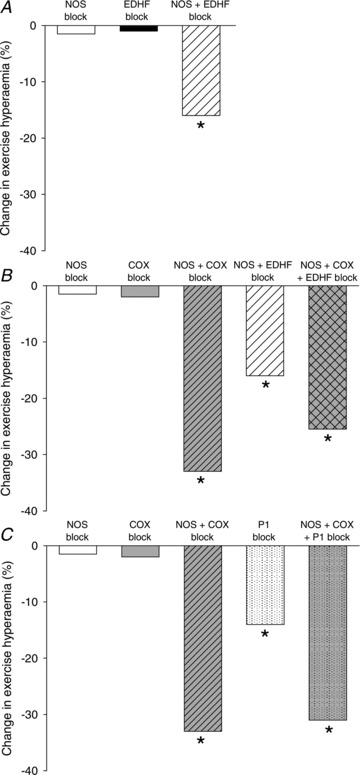Figure 1. Change in exercise hyperaemia in the leg during inhibition of nitric oxide, prostaglandins, EDHF and the purinergic P1 receptor in young healthy male subjects.

A, relative change in leg exercise hyperaemia with single or combined inhibition of nitric oxide synthase (NOS) and the endothelial derived hyperpolarizing factor (EDHF) cytochrome P450 2C9. B, relative change in leg exercise hyperaemia with single, double or triple blockade of NOS, EDHF and cyclooxygenase (COX). C, relative change in leg exercise hyperaemia with single, double or triple blockade of NOS, COX and the adenosine P1 receptor. In all experiments the exercise performed was single leg knee extensor exercise. Inhibition was achieved by arterial or venous infusion: NOS inhibition by NG-monomethyl-l-arginine (l-NMMA) or NG-nitroarginine methyl ester (l-NAME), COX inhibition by indomethacin, CYP 2 C9 by sulfaphenazole, EDHF by tetraammoniumchloride, and Pi receptor blockade by theophylline. Blood flow was determined by either thermodilution or ultrasound Doppler technique. Adapted from Frandsen et al. (2000), Hillig et al. (2002), Mortensen et al. (2007) and Mortensen et al. (2009).
